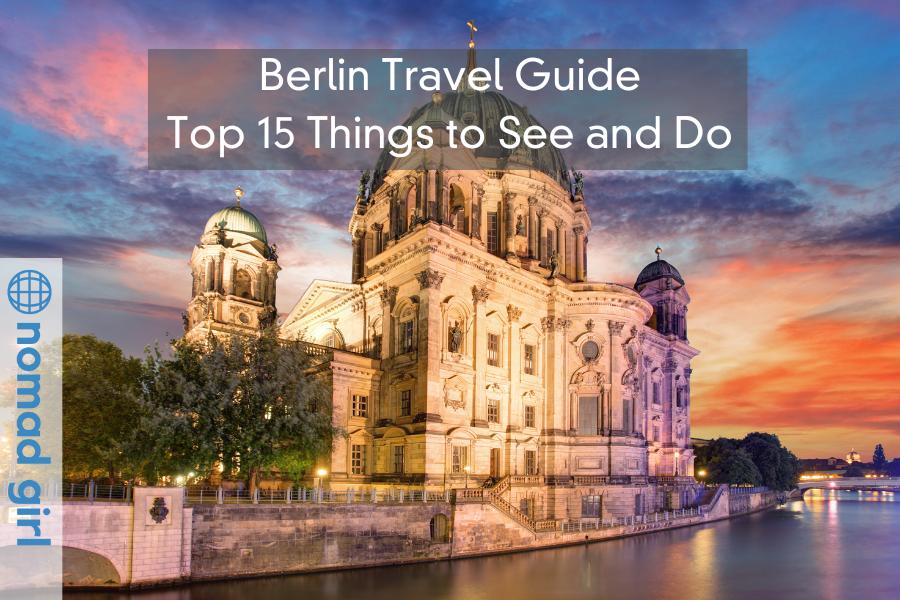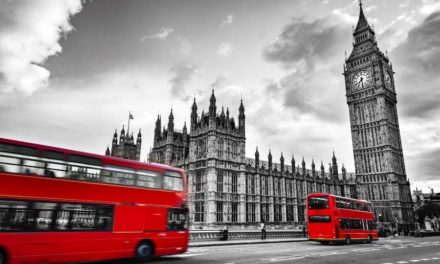If you’re looking for an incredible destination in Europe, Berlin should be at the top of your list. This bustling metropolis offers a vibrant nightlife scene, delicious local cuisine, a wealth of culture and history, impressive historical sights and museums, and a reputation for some of the best beer in the world.
If you’re planning a trip to Berlin, get ready for an exciting experience. As a popular destination for digital nomads, the German capital offers a wide range of attractions that appeal to adventurous city explorers. It’s no wonder that millions of tourists flock to Berlin every year.
If you are considering Berlin as a travel destination or are in need of suggestions on how to make the most of your visit to this remarkable German city, this Berlin Travel Guide provides a comprehensive list of the top attractions and activities to experience.
1. See the Impressive Brandenburg Gate
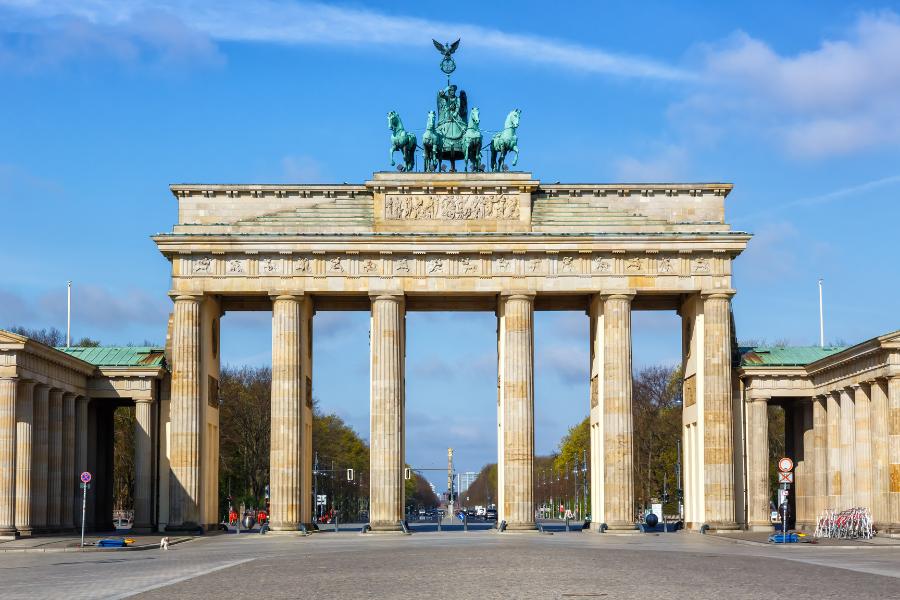
The Brandenburg Gate is one of Berlin’s most popular attractions due to its historical significance. This grand neoclassical monument has stood since the 17th Century and has served as a symbol of division between East and West Berlin. It is considered a significant landmark in the city’s history.
The Brandenburg Gate was constructed by Prussian King Frederick William II on the site of a former city gate. It holds historical significance as it was traversed by Napoleon Bonaparte, the First Emperor of France, following the Battles of Jena and Auerstedt.
The Brandenburg Gate is one of Berlin’s most renowned landmarks, attracting a large number of tourists. To ensure a peaceful visit and capture uninterrupted photos, it is advisable to arrive early in the morning before the crowds accumulate.
2. Visit the Topography of Terror

Berlin is known for its impressive museums, and one that should not be missed is the Topography of Terror. Located in the heart of the city, this museum offers a unique opportunity to delve into one of Europe’s most haunting chapters. Situated on the site that once served as the headquarters for the Gestapo, the secret state police under Nazi rule, the Topography of Terror provides a comprehensive understanding of the persecution and genocide that occurred during this dark period in history. Visiting this museum is a must for those seeking to gain insight into the atrocities committed and to pay homage to the millions of lives lost.
At the museum, there is a comprehensive exhibit showcasing a collection of photographs, documents, audio recordings, films, and other materials. These artefacts provide valuable insights into the daily lives of Europeans during the Nazi occupation. The exhibit also delves into the numerous crimes committed by the Nazis, such as their prosecution of individuals, their establishment and operation of extermination camps, and their unsuccessful efforts to evade justice.
The Topography of Terror is a museum in the Mitte district of Berlin that is open every day from 10 AM to 8 PM. It is conveniently located within walking distance of Potsdamer Platz, a popular public square in the city centre.
3. Explore the Museum Island
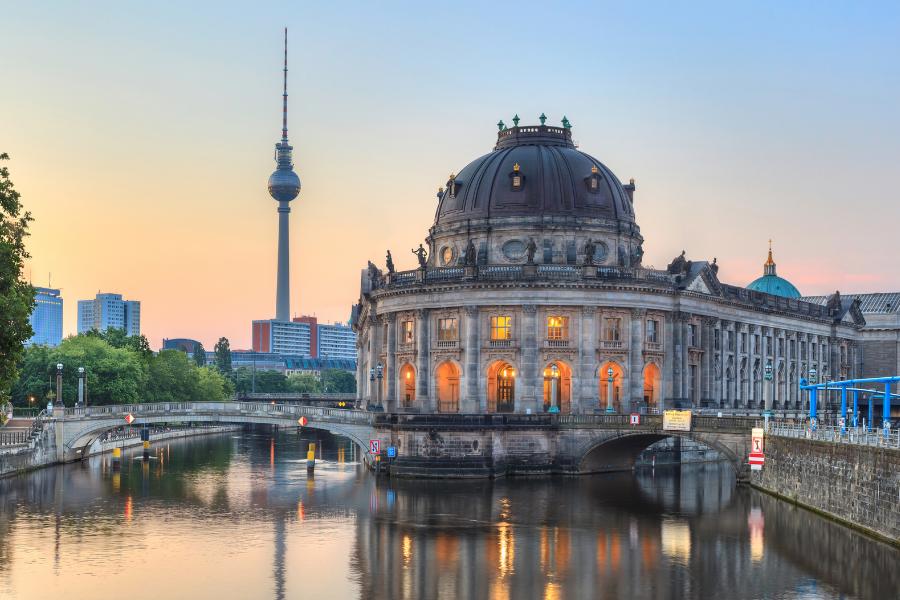
Museum Island in Berlin is home to a collection of five exceptional museums situated along the banks of the river Spree. This renowned complex spans a canal that stretches approximately 400 meters in length. Designated as a UNESCO World Heritage Site, visiting Museum Island is a must-do experience for anyone exploring the city of Berlin.
The Museum Island is home to a number of the city’s oldest and most important museums. Among them is the Old Museum, constructed in 1830. Another notable museum is the New Museum, which unfortunately suffered destruction during World War II but was reconstructed in 2009. The New Museum holds various collections, including the Papyrus Collection, the Egyptian Museum, and the Collection of Classical Antiquities. Additionally, visitors can explore the other museums located on Museum Island, such as the Old National Gallery, Bode Museum, and the Pergamon, which is home to the Museum of Islamic Art.
4. Learn History from the Humboldt Forum
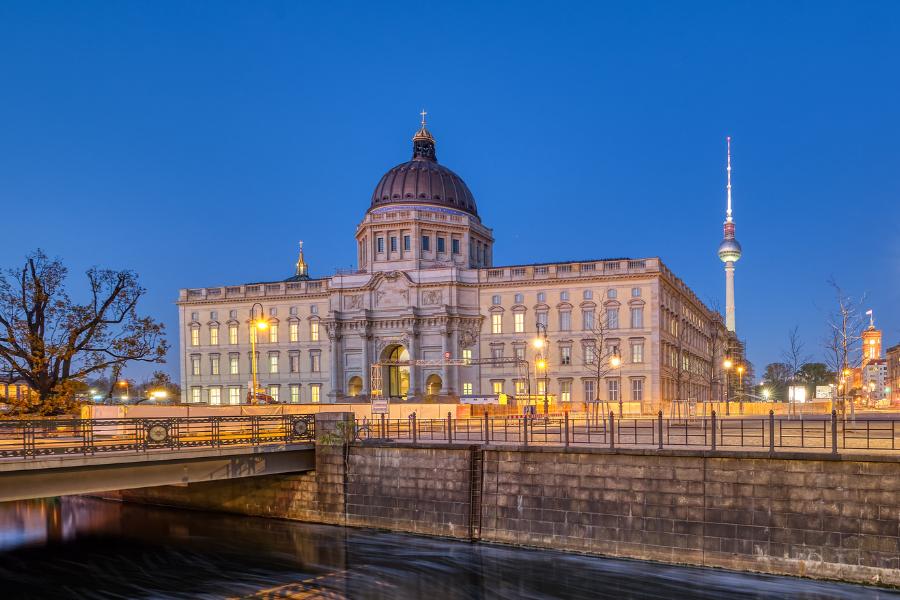
The Humboldt Forum is a noteworthy museum located on Museum Island that should not be missed during a visit. It is the newest addition to the complex and houses the Museum of Asian Art (Museum fr Asiatische Kunst) as well as the Ethnological Museum of Berlin (Ethnologisches Museum). Having opened its doors in 2019, this impressive museum is widely regarded as being on par with the world’s top museums.
The Humboldt Forum in Germany is home to an extensive collection of non-European treasures, boasting over 400,000 artifacts gathered from various parts of the world. Notable exhibits include ancient Asian art and a significant collection dedicated to China. In addition to its galleries, the museum also features on-site restaurants and a shop for visitors to enjoy.
5. Check out the Berlin Wall Memorial
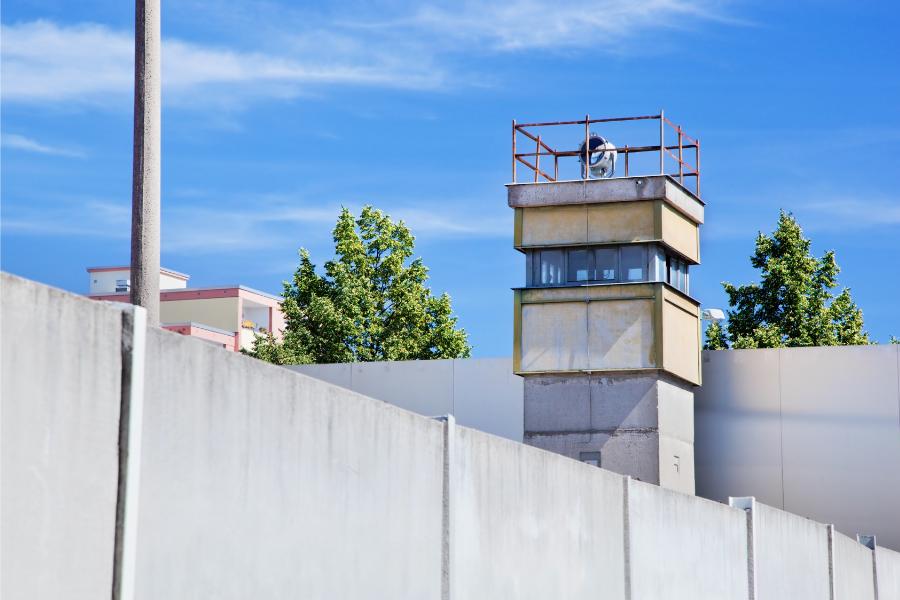
The Berlin Wall Memorial is a significant historical site that should not be missed. Spanning 155 km, the Berlin Wall was constructed in 1961, representing the deep-seated tensions between East Berlin and West Berlin during the Cold War era. Although the wall was dismantled in 1989, a 1.5-mile section was preserved as a memorial to commemorate the lives lost in the desperate attempts to escape from East Germany. This memorial wall serves as a poignant tribute to the victims of the division and serves as a solemn reminder of the tragic events that once divided Europe.
In this area, there is a trampoline covered in graffiti that was cleverly used by the East German border guards to deter people from climbing over the wall. Additionally, you will find the Gnter Litfin Memorial, which honors the first civilian who tragically lost their life while attempting to cross from east to west.
6. Relax at Tiergarten
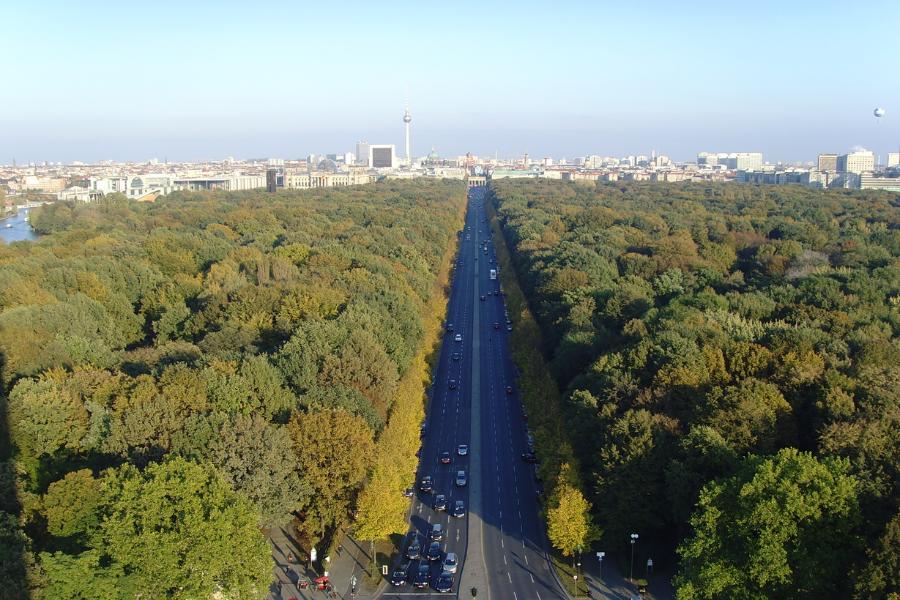
Tiergarten, located in the inner part of Berlin, is the city’s most significant park and offers a peaceful retreat from the bustling streets. Covering 210 hectares, it is one of Germany’s largest parks. Originally a hunting reserve for royals, it was transformed into a public park in 1700. The park boasts a wide variety of trees, shrubs, expansive flower borders and grassy areas. It is an ideal destination for leisurely walks, picnics, and even boating, providing a scenic escape for visitors.
The Tiergarten is not only a park, but also home to various monuments and statues that hold historical significance. One such monument is the Statue of Queen Louise, which was erected in 1880. This statue portrays Queen Louise attending to wounded soldiers during the war, serving as a reminder of her compassion and bravery. Additionally, the Tiergarten features the Monument to Frederick Wilhelm III, the Memorial to the Roma Victims of National Socialism, and the Memorial to Homosexuals Persecuted Under Nazism. These memorials pay tribute to the victims of past atrocities and serve as important reminders of our history.
7. Admire the Charlottenburg Palace
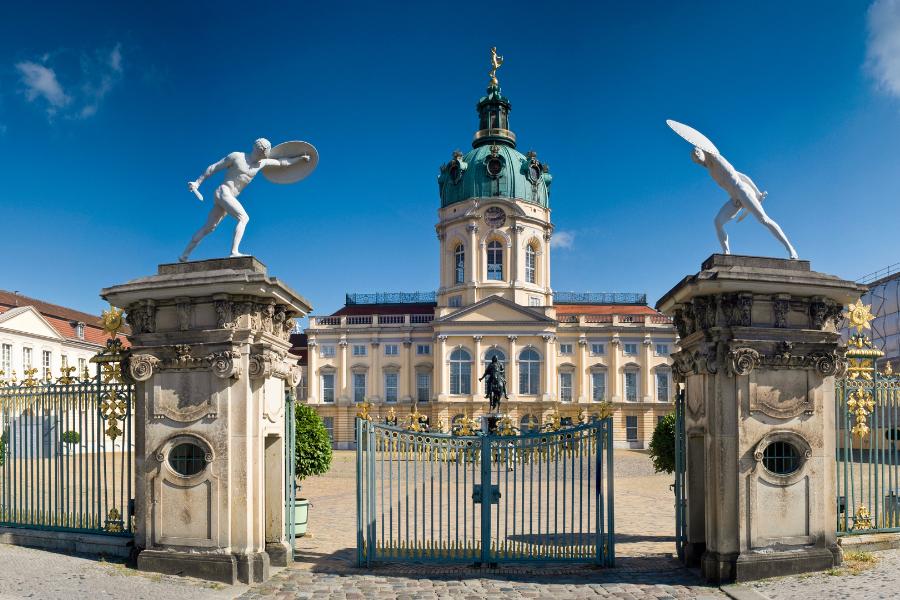
The Charlottenburg Palace, constructed in the late 17th Century by Elector Frederick III of Brandenburg, is an impressive example of Baroque-style architecture. It served as the royal residence during the Prussian monarchy until it was destroyed by a fire in 1701. However, the palace has been restored and now boasts several remarkable features, such as a grand central dome standing approximately 50 feet tall.
The Charlottenburg Palace in the Western District of Berlin boasts an impressive New Room that features State Apartments and magnificent banquet halls. Exploring the palace, along with its opulent park, is a delightful experience. While some rooms may require an admission fee, the palace’s stunning architecture and fascinating historical significance make it a top attraction that should not be missed.
8. Memorial to the Murdered Jews of Europe
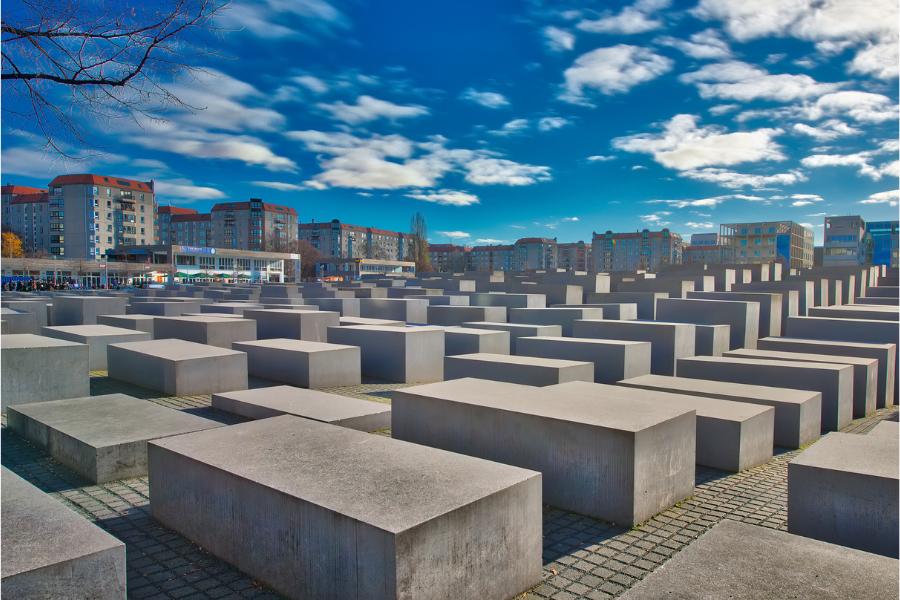
The Memorial to the Murdered Jews of Europe, also known as the Holocaust Memorial, stands as a powerful symbol of the German people’s refusal to ignore the historical atrocities committed against the Jews. This significant Berlin landmark is a must-see for all visitors to the city.
Located on the eastern side of Tiergarten, the Memorial to the Murdered Jews of Europe is a significant historical site. It consists of approximately 3,000 concrete slabs spread across an area of around 19,000 square meters. Beneath the memorial, there is an information center that houses a collection of diaries, letters, and photographs belonging to the victims of the Holocaust. This memorial is highly recommended for individuals with an interest in World War II and the Holocaust, offering a profound and educational experience.
9. Climb the TV Tower (Fernsehturm)
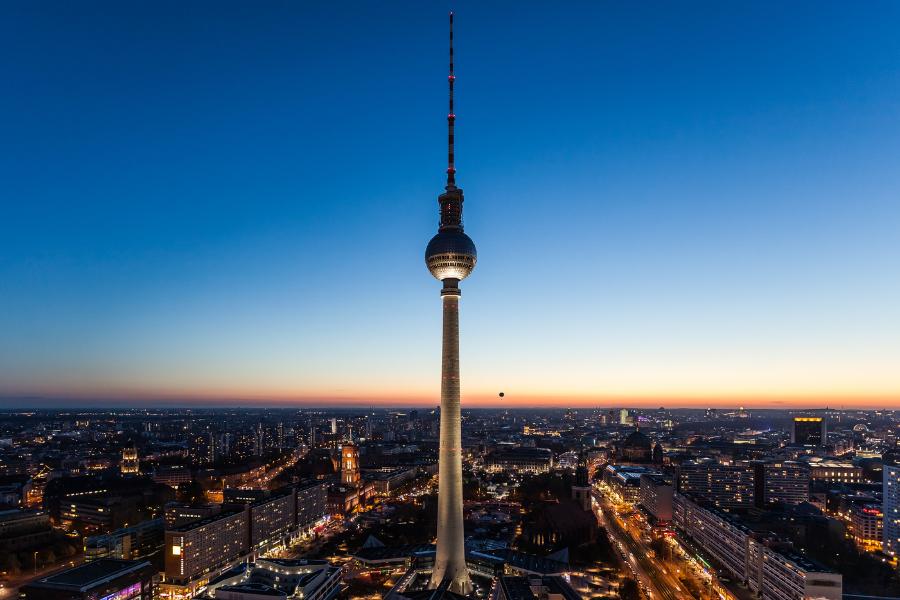
The TV Tower offers a stunning panoramic view of the city. Standing at over 650 feet tall, it is the tallest structure in Germany. You can reach the top by taking one of the two available elevators.
After taking in the breathtaking panoramic views of the city, satisfy your hunger by visiting the rotating Sphere Restaurant or Bar 203, where you can enjoy a variety of drinks and snacks. The tower is open from 10 AM to midnight, and to make the most of your visit, consider booking queue jump tickets. These tickets will allow you to bypass the line and head straight to the top without any wait.
10. Admire the Impressive Architecture of the Berlin Cathedral Church
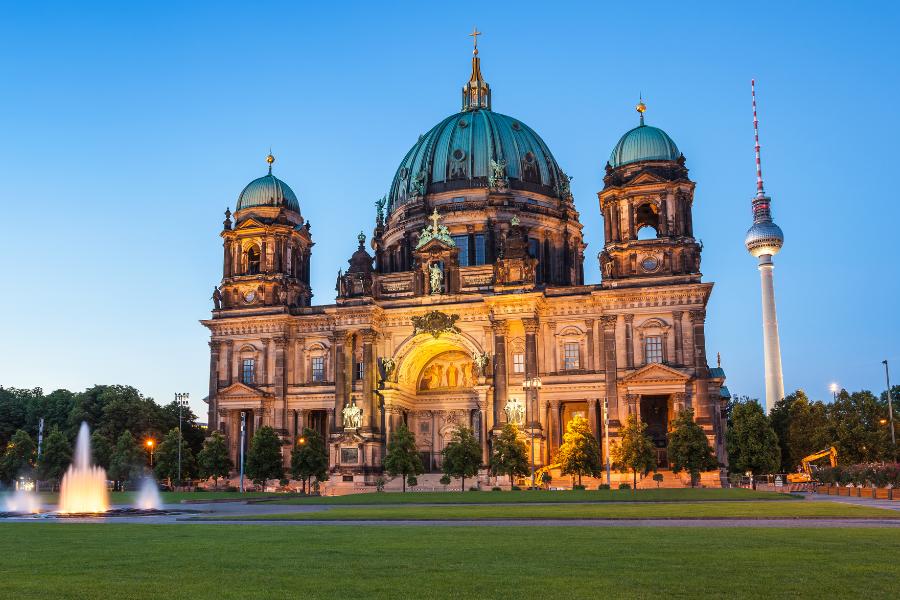
The Berlin Cathedral is a grand structure situated on Museum Island, adjacent to Lustgarten. Standing at a height of 75 meters, it boasts a remarkable dome and showcases exquisite Baroque-style architecture. As the largest church in Berlin, it is comprised of three distinct sections: the Parish Church, Memorial Church, and the Baptismal and Nuptial Church.
During the war, the cathedral suffered significant damages but has since been restored to its original grandeur after many years of repair work. The cathedral boasts several noteworthy features. One of these is the Imperial Staircase, adorned with breathtaking bronze cornices and paintings by Albert Hertel dating back to 1905. Visitors can also enjoy the magnificent views of Berlin from the Imperial Gallery. Additionally, the Hohenzollern Crypt is a must-see, as it houses sarcophagi and monuments spanning from the 16th to the 20th centuries.
11. Wander around the Nikolai Quarter (Nikoliaviertel)
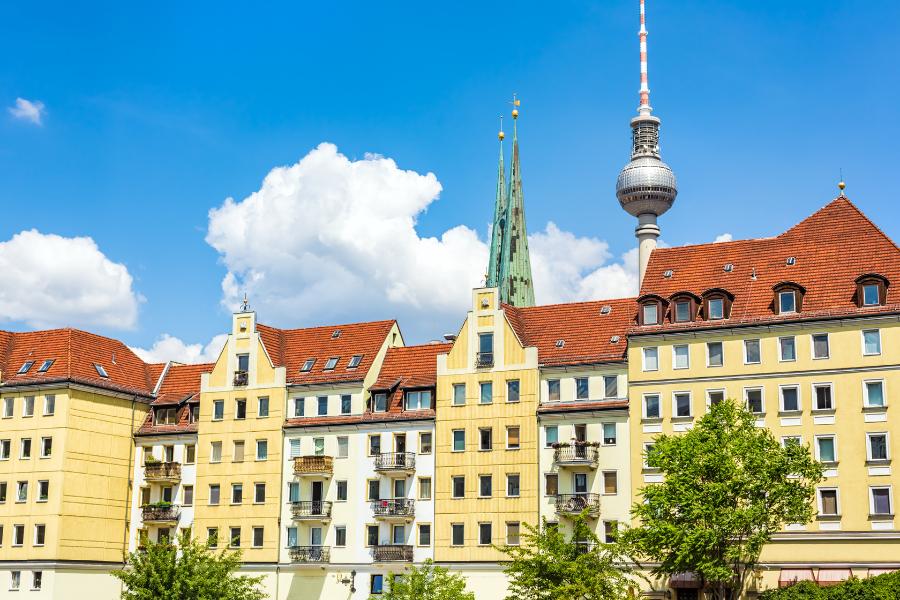
The Nikolai Quarter in Berlin is a vibrant and lively area located in the heart of the old city. It provides a delightful experience for visitors with its pedestrian-friendly streets, charming colourful buildings, and hidden corners waiting to be explored. In addition to the architectural beauty, the quarter is home to a variety of restaurants and cafes where you can indulge in delicious refreshments. Furthermore, there are numerous shops and craft workshops offering unique souvenirs and other intriguing items for you to discover.
When exploring the Nikolai Quarter, make sure to visit the charming older houses and historic buildings that showcase Berlin’s cultural heritage. One such gem is the Ephraim Palace, constructed in the 1760s, which houses fascinating exhibits highlighting Berlin’s vibrant artistic and cultural past. Don’t miss the opportunity to admire the palace’s magnificent staircase. Additionally, the Knoblauch House, also built around 1760, offers a glimpse into the opulent residences of affluent merchants and tradesmen from the past.
12. Shop at the Mauerpark Flea Market
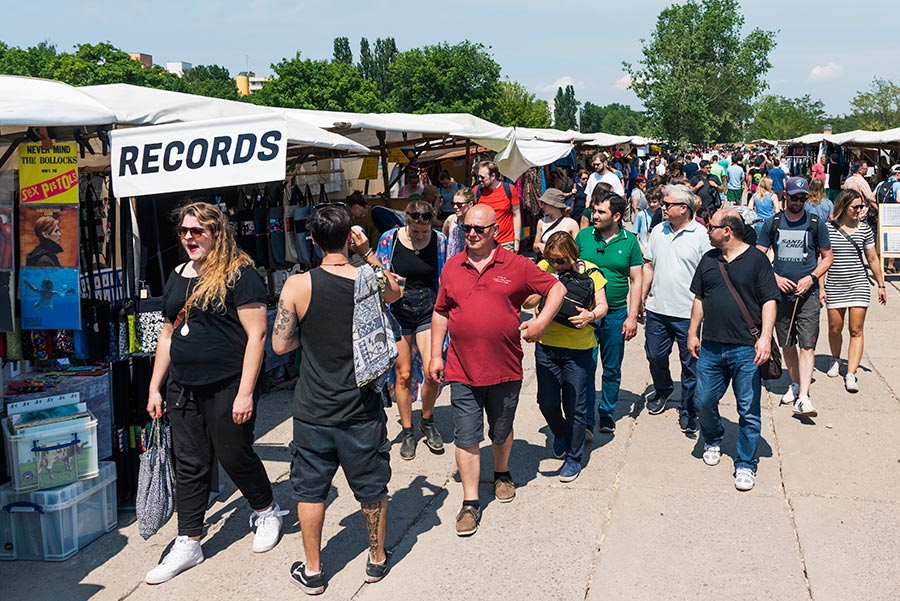
The Mauerpark Flea Market in Berlin is a must-visit if you find yourself in the city on a Sunday. As the largest and most popular open-air second-hand shopping spot in Berlin, this market offers a wide range of items for sale. From clothing and musical instruments to vinyl records, furniture, toys, and bicycles, you’ll find it all here. Even if you’re not looking to make a purchase, the market is a lively and enjoyable place to explore. You can join the bustling crowds of shoppers as they browse and negotiate with the friendly shop owners.
The flea market is located in a vibrant green area where locals gather to relax and enjoy picnics. Along the street leading to the Berlin Wall, visitors can find street performers, spray painters, and jugglers showcasing their talents. Additionally, the amphitheatre hosts karaoke sessions every Sunday afternoon, which are definitely worth checking out.
13. Join the Berlin Craft Beer Experience
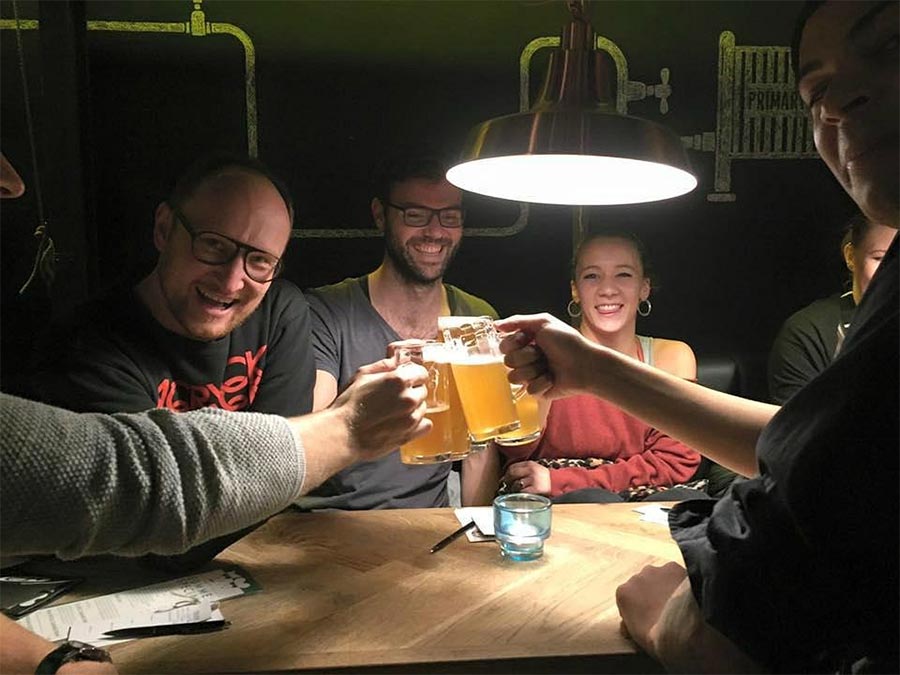
Berlin is renowned for its extensive craft beer scene, making it a must-visit destination for beer enthusiasts. One highly recommended experience is the Berlin Craft Beer Experience, offering a fun and educational opportunity to delve into the city’s rich beer culture. This experience includes visits to the top breweries in Berlin, providing an inside look into the production of craft beer and an opportunity to learn more about the city’s beer-making traditions.
When you go on the tour, you will have the opportunity to see the beer being made and sample the various types of beer that the breweries create. Certain tours even offer the chance to spend the afternoon in one of Berlin’s numerous beer gardens, which are ideal for unwinding and enjoying yourself after a day exploring the city’s main sights. Take pleasure in the laid-back ambiance as you indulge in ice-cold beer and a tasty snack.
14. Learn About Germany’s Industrial History at the German Museum of Technology
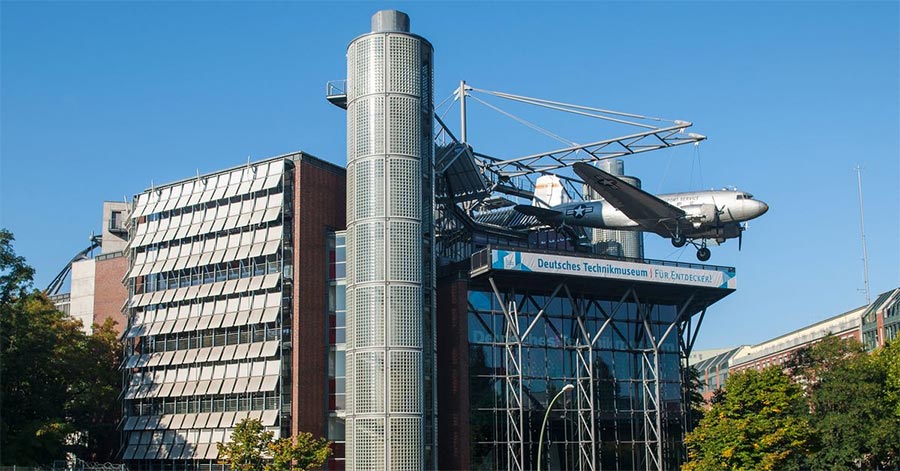
The German Museum of Technology offers a comprehensive exploration of Germany’s rich industrial and technological heritage. Since its establishment in 1983, the museum has been dedicated to highlighting Germany’s remarkable advancements in the field of technology. A visit to this museum is highly recommended, as it provides a multitude of engaging experiences and thrilling activities suitable for both adults and children.
When you visit the German Museum of Technology, one of the main attractions is the comprehensive display of vehicle development. Originally focused on rail transport, the museum now showcases a wide range of industrial technologies.
The museum offers a captivating exhibit of vehicles and aircraft from the steam era, showcasing the evolution of steam engines from 1843 to the present day. If you have an interest in Germany’s technological history, a visit to this museum is highly recommended. Operating hours are from 9 AM to 5:30 PM on Mondays through Thursdays, and from 10 AM to 6 PM on weekends.
15. Chill out in Müggelsee Lido
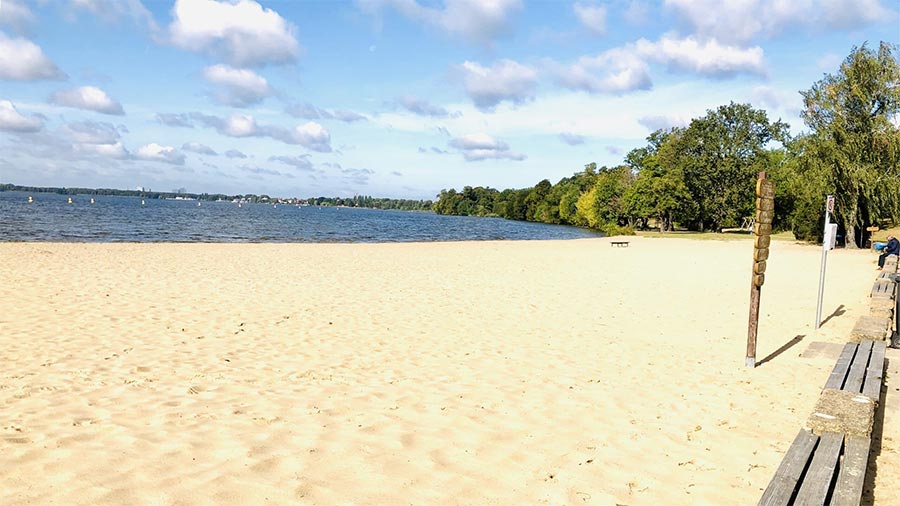
Located in the southeastern area of Berlin, Mggelsee is the largest lake in the city and a favoured destination for locals seeking relaxation. Situated within the urban district of Kpenick, this vibrant lake attracts a multitude of visitors, particularly during the summer months. Alongside picnicking, Mggelsee offers opportunities for swimming and engaging in water sports such as paddling.
Located around the lake are multiple boat rental stations offering a variety of watercraft, including canoes and motorboats. On the northern bank of the lake, visitors can explore the Museum im Wasserwerk. Across the lake lies the charming fishermen’s town of Rahnsdorf, featuring picturesque cobblestone streets adorned with ancient chestnut trees, creating a delightful atmosphere for leisurely walks.
Berlin Welcome Card
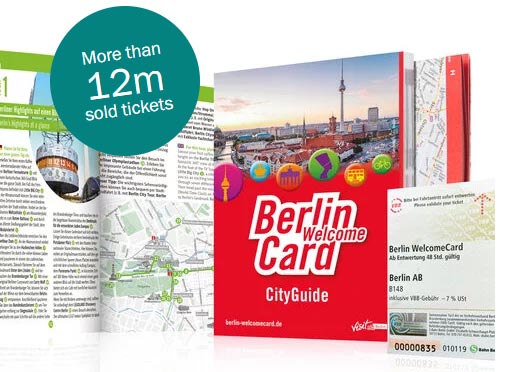
To fully experience the attractions in Berlin, consider getting the Berlin Welcome Card. With prices starting at 24,00 for a 48-hour pass, this card offers a range of benefits:
- Berlin offers free public transport, allowing visitors to save up to 50% on various attractions. Additionally, a complimentary city guidebook, complete with a useful city map, is provided.
Germany Digital Nomad Visa
Germany offers a program that simplifies the process for digital nomads from non-EU and non-EEA countries to live and work in Germany.
Germany Digital Nomad Visa, Freelancer Visa – Requirements and Process


